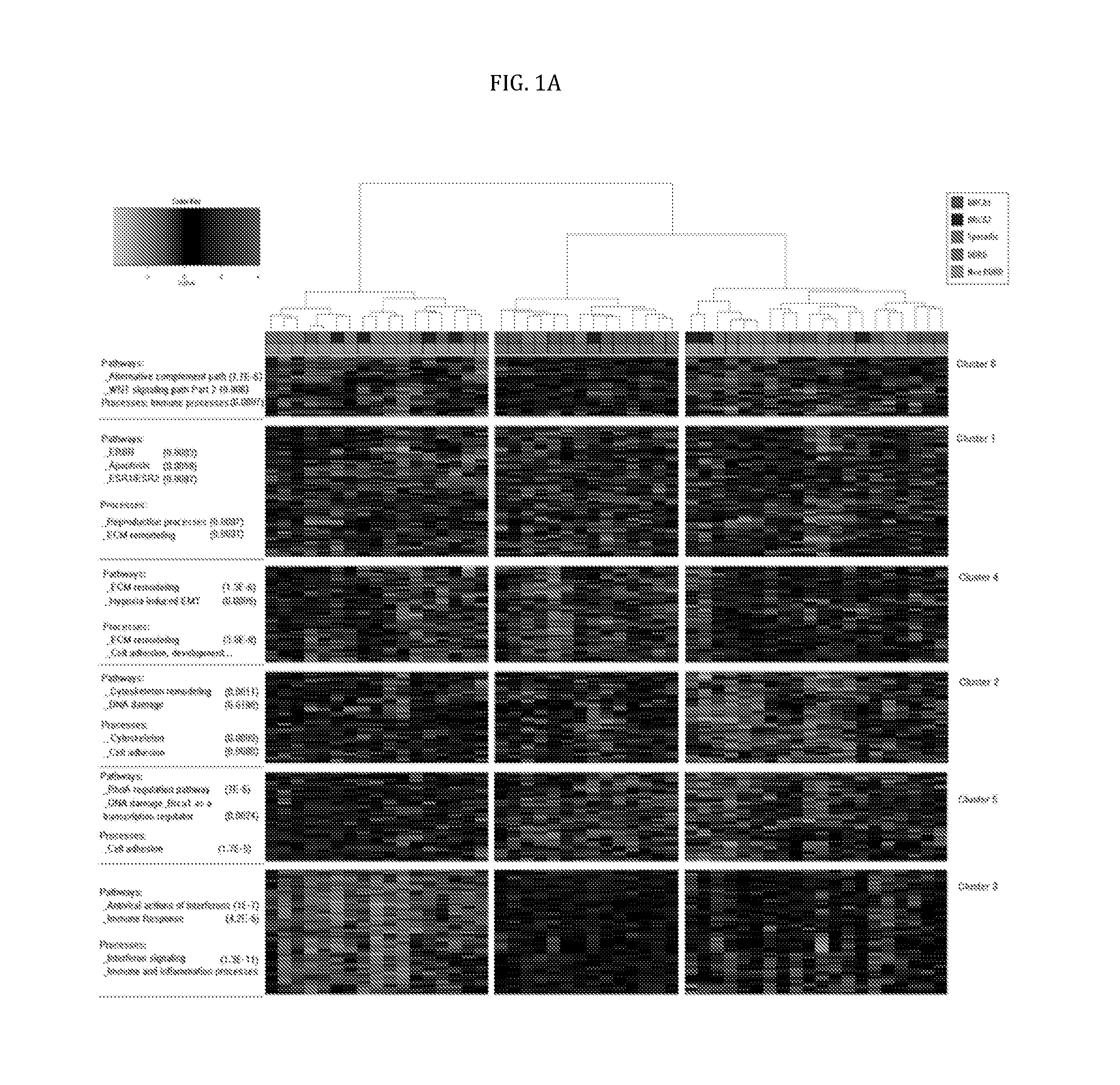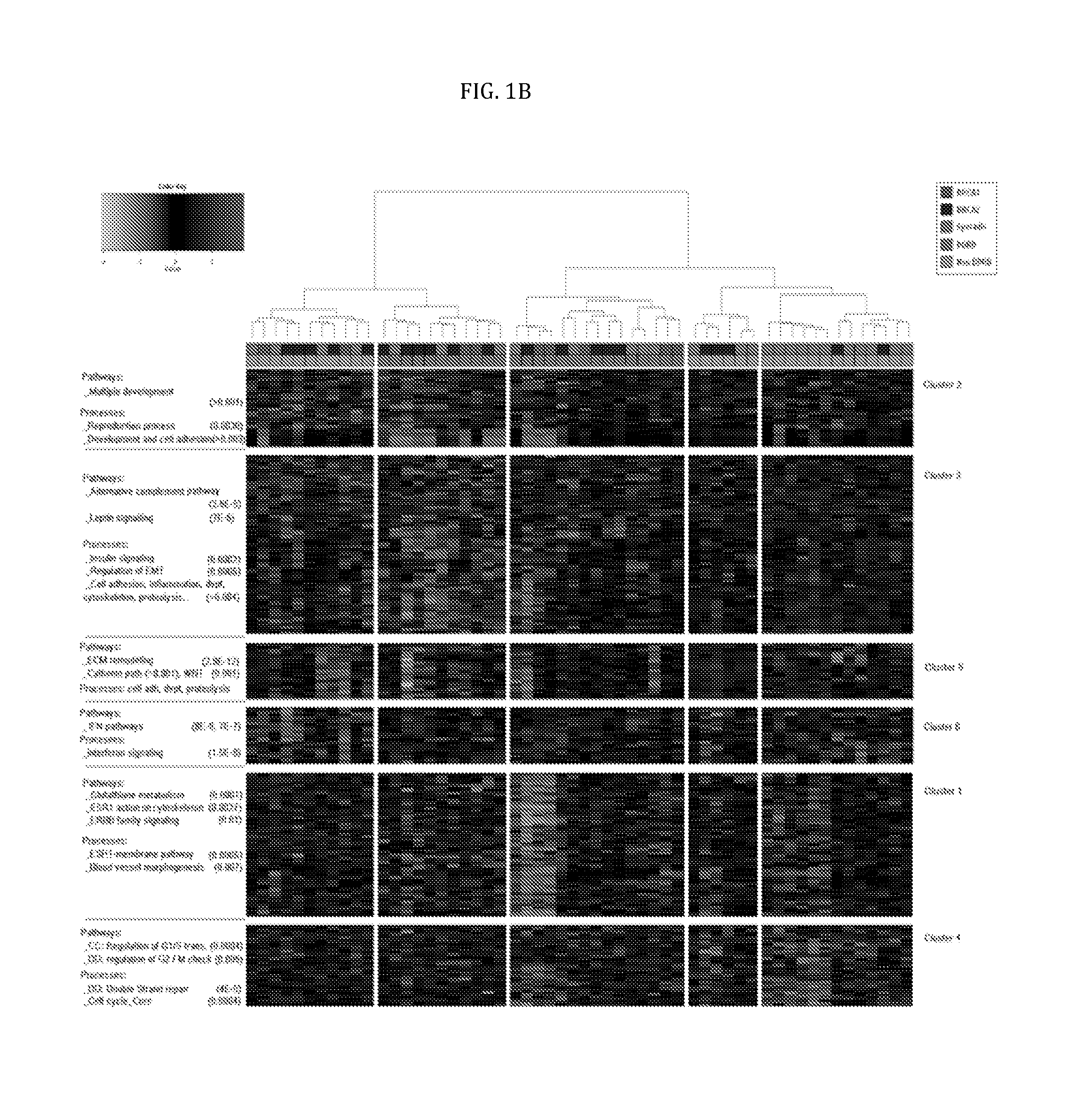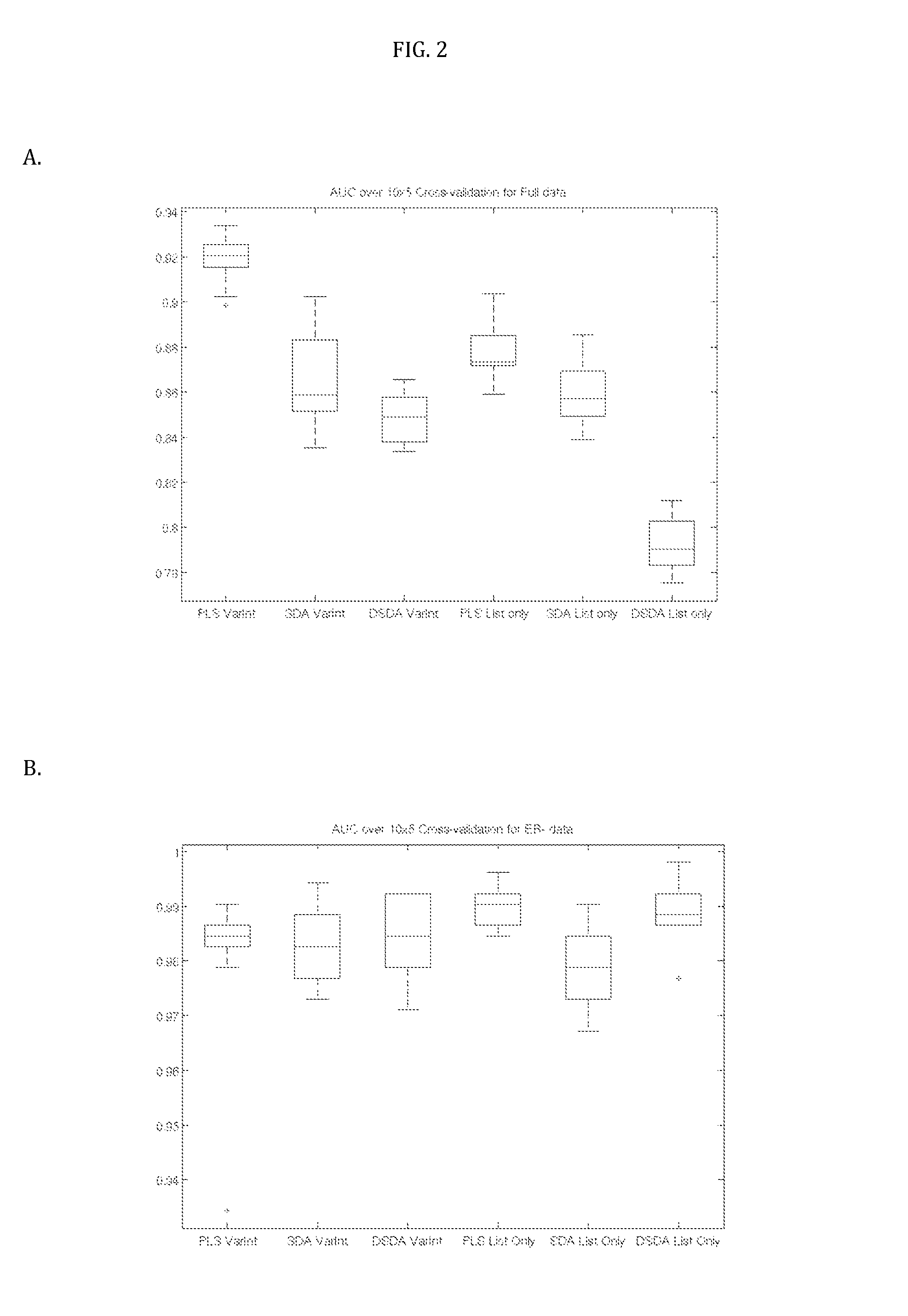Molecular diagnostic test for cancer
a cancer and molecular diagnostic technology, applied in the field of molecular diagnostic tests, can solve the problems of substantial differences in the effectiveness of many drugs, the paradigm is clearly not the best treatment method for certain diseases, and approximately 70% will experience a recurren
- Summary
- Abstract
- Description
- Claims
- Application Information
AI Technical Summary
Benefits of technology
Problems solved by technology
Method used
Image
Examples
example 1
Tissue Processing, Hierarchical Clustering, Subtype Identification and Classifier Development
Tumor Material
[0136]The genes determined to be useful in the present methods (Table 2) were identified from gene expression analysis of a cohort of 107 macrodissected breast tumor FFPE tissue samples sourced from the Mayo Clinic Rochester. Ethical approval for this study was obtained from the Institutional Review Board and the Office of Research Ethics Northern Ireland.
[0137]This cohort of samples can be further described as follows:[0138]47 samples were wild-type for BRCA1 and BRCA2 i.e. expressed biologically functional BRCA1 and BRCA2 proteins. These samples shall henceforth be referred to as sporadic controls.[0139]31 samples were BRCA1 mutant i.e. did not express biologically functional BRCA1 protein.[0140]29 samples were BRCA2 mutant i.e. did not express biologically functional BRCA2 protein.
Gene Expression Profiling
[0141]Total RNA was extracted from the macrodissected FFPE tumor sampl...
example 2
In Silico Validation of the 44-Gene DDRD Classifier Model
[0192]The performance of the 44-gene DDRD classifier model was validated by the Area Under the ROC (Receiver Operator Characteristic) Curve (AUC) within the original Almac breast dataset and three independent datasets. The AUC is a statistic calculated on the observed disease scale and is a measure of the efficacy of prediction of a phenotype using a classifier model (Wray et. al., PLoS Genetics Vol 6, 1-9). An AUC of 0.5 is typical of a random classifier, and an AUC of 1.0 would represent perfect separation of classes. Therefore, in order to determine if the 44-gene DDRD classifier model is capable of predicting response to, and selecting patients for, standard breast and ovarian cancer therapeutic drug classes, including DNA damage causing agents and DNA repair targeted therapies, the hypothesis is that the AUCs following application within these datasets should be above 0.5 with the lowest confidence interval also above 0.5...
example 3
In Vitro Validation of the 44-Gene DDRD Classifier Model
[0208]In order to assess the biology underlying the genes contained within the 44-gene classifier model, a number of studies were carried out in vitro using a panel of breast cell-lines.
Methods
Maintenance of Cell-Lines
[0209]The HCC1937 parental, HCC1937-EV and HCC1937-BR cell-lines were kindly donated by Professor Paul Harkin from Queen's University College Belfast (QUB). The cell-lines were routinely maintained in RPMI-1640 medium supplemented with 50 U penicillin / ml, 50 μg streptomycin / ml, 2 mM glutamine, 1 mM Sodium Pyruvate and 20% (v / v) fetal bovine serum (FBS). The HCC1937-EV and HCC937-BR cell-lines also required 0.2 ml / mg geneticin. Cell-lines were cultured at 37° C. with a humidified atmosphere of 5% CO2.
Clonogenic Assays—Determination of PARP-1 Inhibitor Sensitivity
[0210]For measurement of sensitivity to PARP-1 inhibitor (KU0058948), exponentially growing cells were seeded into 6-well plates. Twenty-four hours followi...
PUM
| Property | Measurement | Unit |
|---|---|---|
| threshold score | aaaaa | aaaaa |
| resistance | aaaaa | aaaaa |
| length | aaaaa | aaaaa |
Abstract
Description
Claims
Application Information
 Login to View More
Login to View More - R&D
- Intellectual Property
- Life Sciences
- Materials
- Tech Scout
- Unparalleled Data Quality
- Higher Quality Content
- 60% Fewer Hallucinations
Browse by: Latest US Patents, China's latest patents, Technical Efficacy Thesaurus, Application Domain, Technology Topic, Popular Technical Reports.
© 2025 PatSnap. All rights reserved.Legal|Privacy policy|Modern Slavery Act Transparency Statement|Sitemap|About US| Contact US: help@patsnap.com



